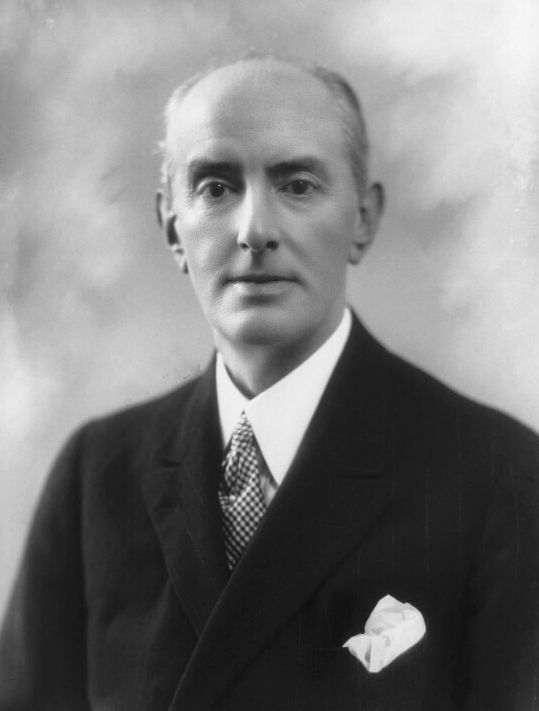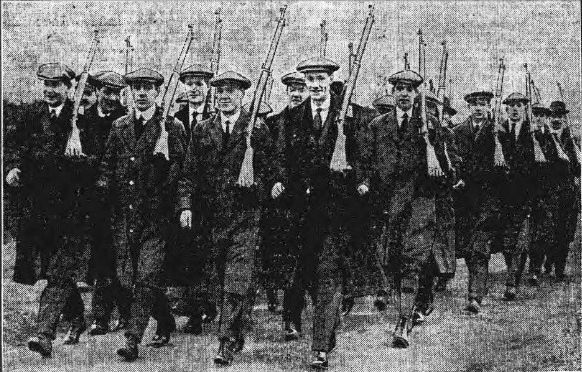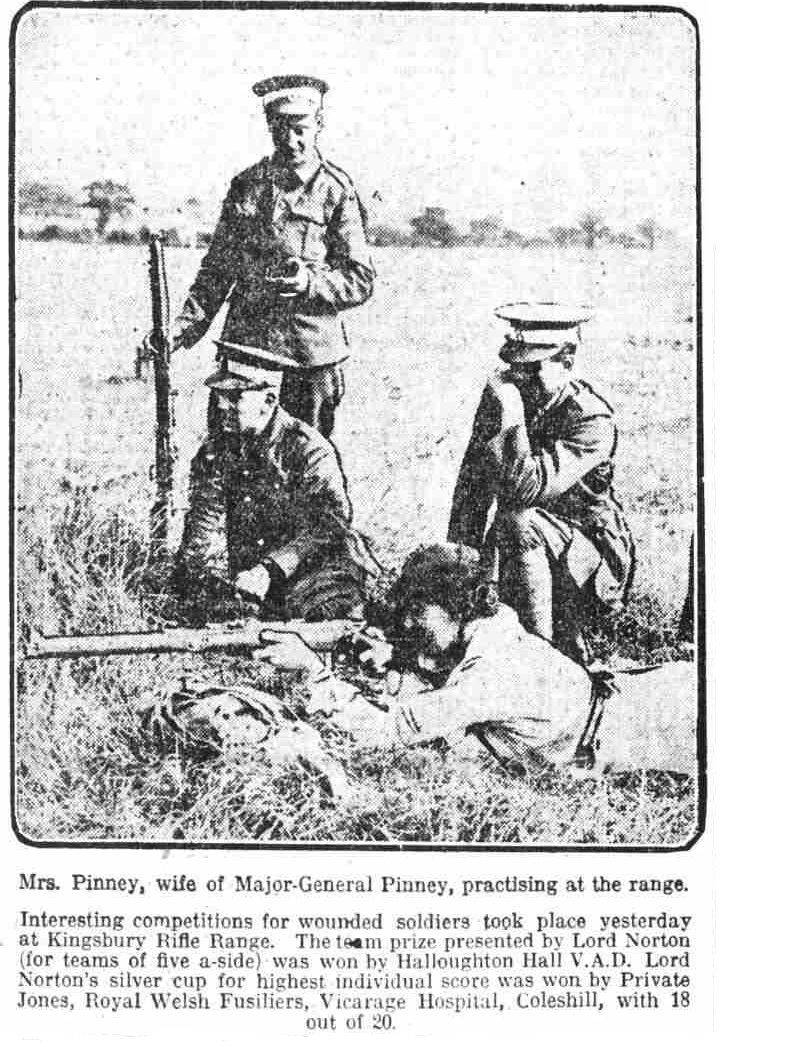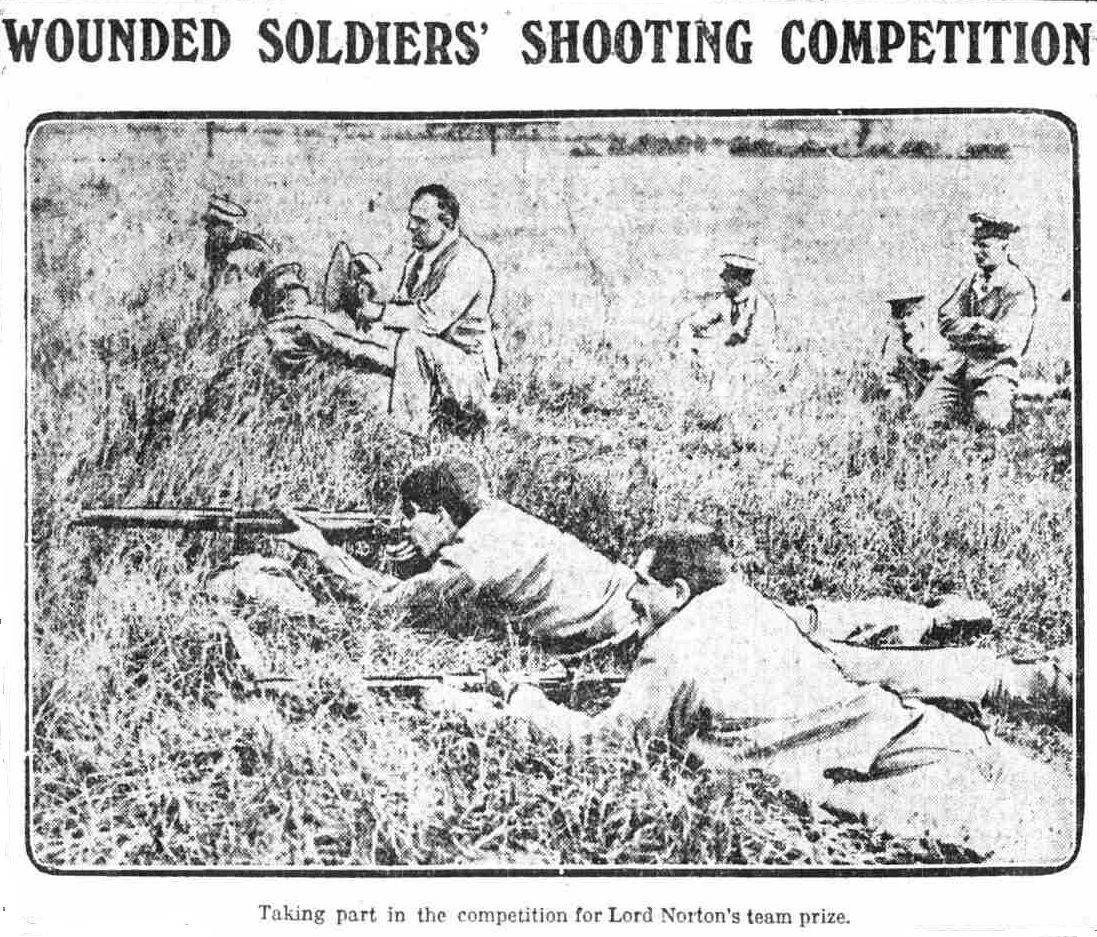In 1903, when the old Bournbrook Range closed, the Birmingham Volunteers approached Birmingham City Corporation to secure its help and support in obtaining a replacement site. Primarily the provision of a new range was a matter for the War Office and the Volunteers themselves but the Corporation agreed to the request. The new range needed to be within easy reach of the city and where it would not create any danger to the public. The Corporation eventually selected a stretch of land, comprising 738 acres, at Waste Farm in Hurley Common that was formerly part of the Peel estate. However, the owners of the land were asking for more money per acre than was thought fair and there were financial issues surrounding the splitting up of the property. In addition there was a reservoir and waterworks on the site that were not needed for the new range. The Corporation did not want to buy more land than was necessary so in March 1907 they brought a Bill before the Select Committee of the House of Lords to consider acquiring the land by compulsory purchase. By July 1908 the terms of settlement were finally reached and the Corporation acquired the site under statutory powers for approximately £21,000.
The land in question was served by the Midland Railway which connected with both Birmingham and Tamworth thus providing easy access for all the visiting troops. Under the original scheme the range was for the use of the two Birmingham battalions so in view of this, the Corporation decided to lease the ground to them at a moderate rent while their volunteers constructed the range. Later, when a change in the Territorial system brought about a new situation, the County Territorial Association became the lessees of the land and, in connection with the War Office, undertook the completion of the work. As the range was now to be used by all the battalions in the county, the Corporation revised the terms of the lease and in fairness to the ratepayers if Birmingham, increased the rent so as to entirely cover additional costs.
Construction eventually got underway in autumn 1909 with a 600 yards long road from Kingsbury railway station to the first firing point and it was hoped that work would be completed by the end of the year. However, bad weather over the winter, difficult terrain that was hindering construction and prolonged and tedious negotiations with the War Office, led to a delay so that the completion date was set back to May the following year.
The delay caused by the War Office came to a head in early 1910 and was exacerbated by its ongoing closure of 1,000 yard rifle ranges across the country. The War Office was very concerned that these ranges would be misused by men who in its opinion were little more than 'pot hunters', and this had caused considerable concern for those involved at Kingsbury. Although a 1,000 yard range had originally been sanctioned, the War Office was now only prepared to fund a 600 yard range and provide a grant of between £5,000 to £6,000 for the entire construction. When soldiers were using rifles with a 3,000 yard firing range, it seemed ludicrous to only allow them to fire up to 600 yards. This move was considered by all involved as one of those unintelligible economies of the Whitehall authorities, rather than one of efficiency, and was very worrying for its short-sightedness. The War Office finally compromised and consented to construction that allowed firing at 800, 900, and 1,000 yards, on the proviso that the extra cost of about £500 was found privately.
Finally on Wednesday June 10th 1910, the Rifle Range, although still not complete, was formally opened by the Marquis of Hertford, Lord-Lieutenant of Warwickshire. The full account, as reported in the Leamington Spa Courier, is printed below. Unfortunately local feelings about the range's financial situation came to a head in 1911 when instead of bringing expected trade and added value to Kingsbury; it was costing the rate payers £100 a year to cover lost income from the land upon which the range stood. It was a burden they could well do without and one, it was hoped, that a grant from the Treasury would remedy.
June 10th 1910
OPENING OF KINGSBURY RIFLE RANGE
LORD HERTFORD OF RIFLE PRACTICE
'More delightful weather could not have been desired than that with which those, who on Wednesday took part in or witnessed the official opening by Lord Hertford of the new rifle range at Kingsbury. There was a large attendance of Midland Territorial Officers and members of the Warwickshire Territorial Association.
Among those present being Lord Norton, Brigadier General Raitt, Colonels Waterson (Brigadier General Warwick Brigade) Wyley, Whitcombe Hart and Wilkinson; Lieutenant Colonels Barnsley, Nutt, Walker, Lister, Martineau and Halse; Majors Hardisty, Porter, Pearson and Dixon; Captain and Adjutant Hamilton, Mr Neville Chamberlain, the Right Hon. H.A. Adderley and Colonel G.Dibley.
Following the ceremony General Raitt proposed a vote of thanks to Lord Hertford. He did not think there was any county in which the Lord Lieutenant was more keenly interested in the welfare of the Territorial force than was the case in Warwickshire.
The opening of that range was of immense importance to the Warwickshire force and particularly to the Birmingham Units. For many years their musketry training had been carried out under great difficulties, and it was to the credit of the commanding officers that anything had been done at all. Had the range not been constructed he did not think with the increase of members that the Territorial Force had acquired from Warwickshire that it would have been possible to continue musketry and a great debt of gratitude was owing to the County Association, the commanding officers, the Birmingham Corporation and everybody else concerned in the provision of the range (hear hear).
Mr Neville Chamberlain as chairman of the Range committee of the County Association seconded the resolution and in doing so said only those who had been concerned in all the work in connection with that range were able to realise how much was owing to Lord Hertford, who had taken very keen interest in it from the beginning. The work had been in progress a long time, and was not completed yet, but they were insight of the end, and then he hoped the range would be of great advantage to the musketry in the Midlands (Applause)
Lord Hertford replied said: Having been in the Yeomanry, it was only natural he should take great interest in the Territorial Force, but even had that not been the case his interest would still have been aroused by King Edward’s address at Buckingham Place to the Lord-Lieutenant on the work of the county associations. After listening to the appeal then made it was impossible not to take the keenest interest in the work.
For anything, he had done he had been amply repaid by the way in which the work had been taken up by the old volunteer force in the county. It was a pleasure to him every month to receive the returns showing in many cases Officers 100%, men 100% and taking the whole force of Warwickshire had come forward to support the Territorial Force. He hoped that the great energy already displayed would continue, and that they would always be at the top of the list in numbers, as he was quite certain that they be in efficiency. (hear hear).
The one thing necessary for the efficiency of the Birmingham battalions was a good rifle range and it was not much use having a large force of territorial troops who, though well drilled could not shoot. They could not be taught to shoot if they had no range, but thanks in the first instance to the Birmingham Corporation and secondly in the way in which all concerned had taken up the question, they now had what appeared to be a magnificent range. He did not want to begin to find fault but he wished they had had a longer range (hear hear)
He understood the War Office held that Territorials were not expected to shoot at more than 600 yards, but, as the same time, the rifles were sighted to 3,000 yards and he thought there ought to be some happy medium between those distances at which men could shoot. The War Office said they did not want to encourage 'pot-hunting'. That was all very welcome but there was a great difference between encouraging pot-hunting and encouraging keen shots, who were so enthusiastic about shooting that they took the trouble to go to Bisley at their own expense. They were thus improving their shooting, and that was what was wanted in the force. Therefore he greatly regretted they had not got a longer range than 600 yards. (hear hear).
He hoped however that extensive use of the range would be made and that the result would be a high musketry range (applause).
Lord Hertford presented to Sergeant-in-instructor Barlow the medal for long service afterwards a friendly shooting match on the range took place.'
From the Leamington Spa Courier dated Friday June 10th 1910, published by The British Library Board and 'reproduced with the kind permission of the British Newspaper Archive'.




